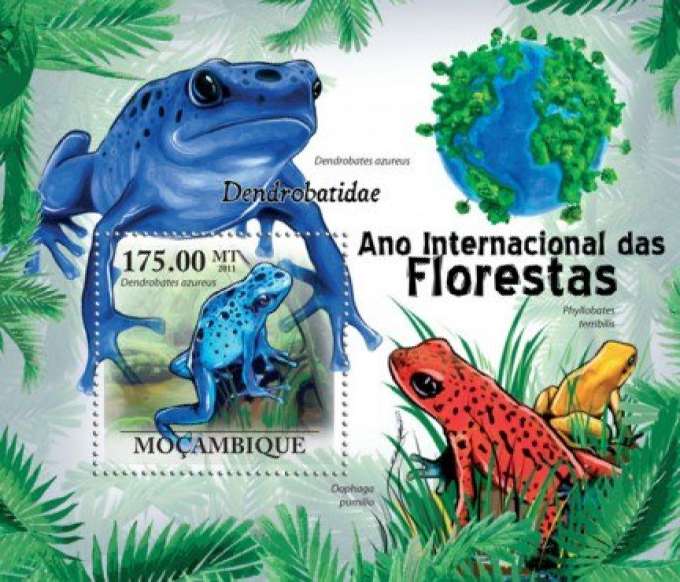Last month, a frog died in an Atlanta botanical garden. With it went an entire species never to hop along the Earth again. Biologists at Zoo Atlanta who’d looked after the frog for the past 12 years called him “Toughie.” He was a charismatic, glossy-eyed specimen and the very last Rabbs’ fringe-limbed tree frog in the world. Joseph Mendelson, the director of research at Zoo Atlanta, had been prepared for this. When the Rabbs’ frog was discovered in Panama in 2005, some 80 percent of the population had already been lost to disease. A few were removed in hope of a revival. Alas, the last female died in 2009. In 2012, when another male died, Toughie became the sole survivor of his kind.
Still, his death hurts, in part because of one of his beautiful biological quirks: The Rabbs’ were the only species in the world where the fathers let the babies eat the skin off their backs.
“THE WORLD HAS GOTTEN SO BAD NOW THAT EVEN THE AMPHIBIANS CAN’T TOLERATE IT.”
“Allowing tadpoles to eat a [father’s] flesh, that’s never been documented in any animal in the world,” says Mendelson. “And we lost that.”
Frog like the Rabbs’ and other amphibians are dying off at an alarming rate. It’s estimated that 200 species of frogs have gone extinct since the 1970s, and many fear it’s a harbinger of greater biodiversity loss that will come for birds, fish, and mammals too.
Ecologists fear that the planet is in the midst of a mass extinction — the sixth in the long history of life on Earth. And it’s looking like amphibians are the most at-risk class of vertebrates.
This is particularly disturbing because amphibians — which include frogs, salamanders, and caecilians (they look like worms crossed with snakes) — have been around for hundreds of millions of years.
“During the great extinctions of the dinosaurs in the Pleistocene, amphibians made it through with no appreciable effect,” Mendelson says. “So they’re not the most delicate creatures in the world. But the world has gotten so bad now that even the amphibians can’t tolerate it.”
Broadly, that’s how it looks. But as with most stories of biology, this one is not so simple.
Some amphibians are revealing resilience even under significant threat. These amphibians are teaching humans critical lessons about what we need to do to protect and save more of them from extinction. To put it another way: As one frog dies, another one (the Sierra Nevada yellow-legged frog) is making a surprising comeback, offering a glimmer of hope for the amphibian Armageddon.
A great percent of the losses are due to one disease: Batrachochytrium dendrobatidis, sometimes called BD or the chytrid fungus, which is one of the biggest threats to amphibians worldwide.
“The chytrid is know to infect pretty much every species of amphibian,” says Reid Harris, a biologist and director of international disease mitigation at the Amphibian Survival Alliance. Not all species succumb to it, but the ones that do die off in horrifying fashion. It’s thought that BD is the main culprit behind the 200 frog species extinctions seen in the past several decades. That’s "the greatest disease-driven loss of biodiversity ever documented," the journal Nature reported in 2012.
Source: VOX, October 14, 2016
http://www.vox.com/science-and-health/2016/10/14/13147056/amphibian-ext…

- Login om te reageren
